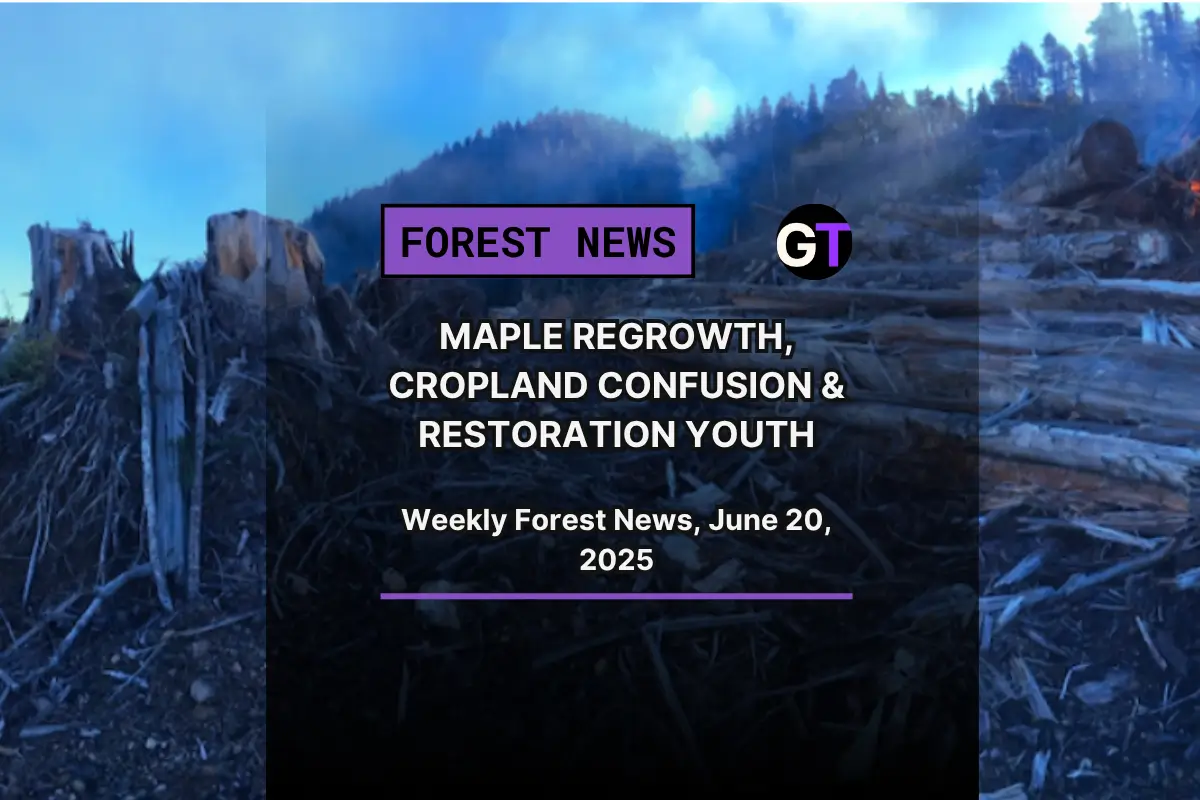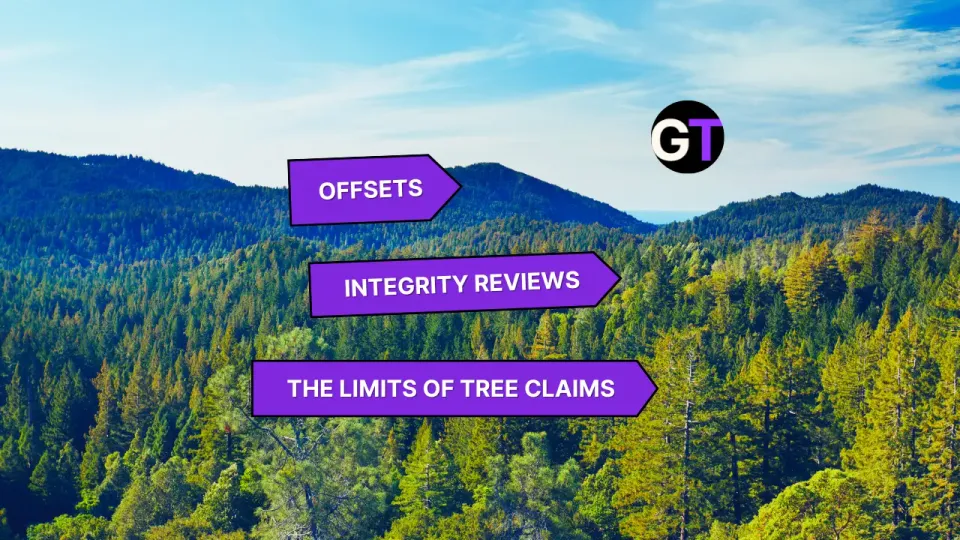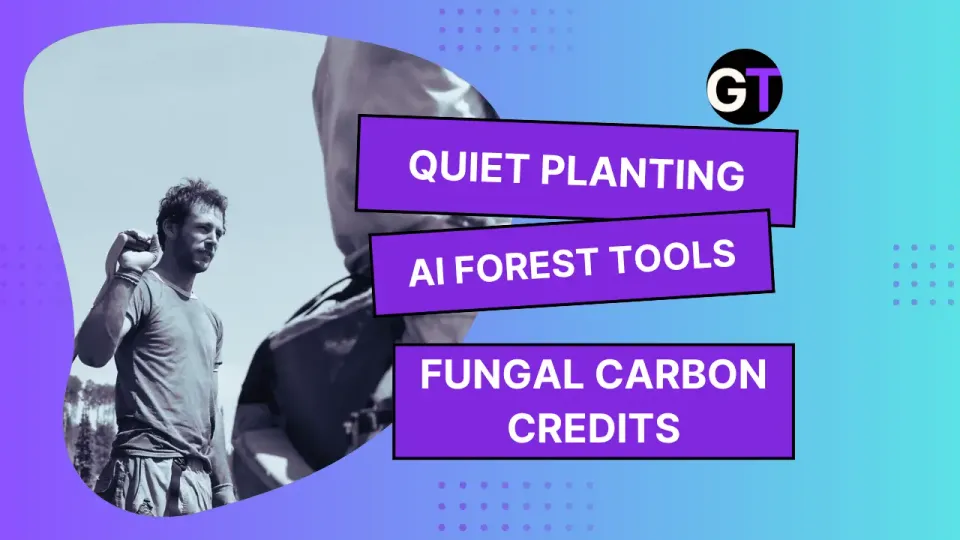Maple Regrowth, Cropland Confusion & Restoration Youth
This week: forest fixers, faulty data, and the push to rebuild trust in tree planting, timber rules, and reforestation youth.

After Controversy, Plant-for-the-Planet Focuses on the Trees
Following years of rapid expansion, bad press, and shaky record-keeping, Plant-for-the-Planet is returning to basics. Once celebrated for empowering youth and launching bold restoration projects, the group now faces donor scrutiny and leadership shakeups after investigations revealed inflated planting claims and a failed beachfront real estate deal. But staff in Mexico remain focused on science-driven restoration: boosting native species diversity, improving survival rates, and using tools like TreeMapper to track progress. With 15 million trees planted globally, the big question is whether they can rebuild trust while staying true to their forest-first mission.
💬 Can transparency and better data help replant both forests and reputations?
👉👉 Read more in Mongabay
EUDR Woes: Transhipment Loopholes Undermine Illegal Timber Crackdown
The EU’s deforestation regulation (EUDR) is facing serious criticism for failing to stop illegal timber entering Europe via transhipment hubs like Singapore, Hong Kong, and China. According to Forest Trends experts, the EU’s new country classification list—intended to guide enforcement—underestimates risk in key deforestation hotspots and overlooks how origin labels can vanish during processing. For example, Papua New Guinea is bizarrely labeled “low risk,” despite a long history of forest loss. Critics warn the list is shaped more by politics than actual threat level, and Forest Trends’ own dashboard flags over 100 countries as high-risk. Without stronger attention to legality, corruption, and transhipment risk, the EUDR may fall short of its promise to keep deforestation-linked products out of European markets.
💬 Can transparency in global timber supply chains improve if risk is politically diluted?
👉👉 Read more in Wood Central
50 Young Forest Champions to Restore Forests from the Ground Up
To mark World Environment Day, FAO has named 50 Young Forest Champions across Ghana, Kenya, Peru, Uganda, and Zambia. These 22- to 30-year-olds will receive mentorship, training, and tech tools through the UK-funded AIM4Forests programme to help monitor ecosystems, restore degraded lands, and lead forest conservation in their communities. The initiative builds on a successful 2024 pilot in Kenya, where 10 female champions mobilized over 10,000 people and planted more than 150,000 trees.
With over 1,500 applicants, the selected champions are now poised to form the foundation of a possible global youth network focused on forests, climate, and innovation—driven by energy, inclusion, and local knowledge.
💬 Can youth-led reforestation deliver long-term impact when paired with cutting-edge tools and community trust?
👉👉 Read more from the FAO
Which U.S. Cropland Data Should You Trust?
A new PLOS ONE study compares four major datasets tracking U.S. cropland expansion from 2008–2017 and finds that while overall gains are similar (5.18–6.33 million acres), the where and what varies widely depending on definitions. The USGS’s LCMAP shows more expansion in the southern Great Plains due to its broader definition of cropland (including managed pasture), while others like Lark et al. 2020 emphasize Midwest conversion. Up to 86% of discrepancies are definitional—not errors—so which dataset you choose should depend on your research focus, whether it’s biodiversity, soil carbon, or regulatory baselines.
💬 How much do definitional quirks shape our understanding of land use change?
👉👉 Read more in PLOS ONE
Can Voluntary Standards Make Mining Forest-Smart?
A new Forest Declaration Assessment report explores how voluntary sustainability initiatives (VSIs) can help limit mining’s damage to forests—if they’re strengthened and better supported. Though some VSIs are raising awareness and offering guidance, most fall short of addressing forest impacts head-on. The report urges greater alignment with biodiversity goals, better support for small-scale miners, and stronger collaboration with governments, financiers, and Indigenous communities. With global demand for transition minerals rising fast, the report calls this a critical moment to shape forest-friendly mining before the damage deepens.
💬 Could stronger standards and smarter financing make forest-positive mining a reality?
👉👉 Read the full report at Forest Declaration
Can Science Help Save Sugar Maple in New Brunswick?
New research from the Northern Hardwoods Research Institute lays out a roadmap for the artificial regeneration of sugar maple—offering technical notes and a guidebook for forest managers facing declining hardwood quality. With natural regeneration stalling due to poor seed sources and competition from beech, the ARM project provides science-backed strategies for site selection, direct seeding, and maintenance. The aim? To restore the ecological and economic value of maple in a warming world—if the right investments and follow-through are made.
💬 Could artificial regeneration be the key to reviving Eastern Canada’s iconic hardwood?
👉👉 Read more from the Northern Hardwoods Research Institute on LinkedIn
Saudi Credits, Cerrado Cows & U.S. Timber Push
This week in forest finance: Saudi Arabia inks a 30M-tonne carbon credit deal for NEOM, Brazil explores whether cattle and native trees can profitably coexist, and the U.S. commits $200M to ramp up timber harvests under a revived national strategy. Ethiopia’s EthioTrees project scales up community-led restoration with 100K+ carbon credits annually, while a new $18M agroforestry fund targets degraded land in the Atlantic Forest. From global offsets to local ecosystems, the money behind climate solutions keeps moving—fast.
💬 Which of these models best balances profit, people, and the planet?
👉👉 Read our weekly column on Ground Truth

Edited by Chris Harris

This work is licensed under a
Creative Commons Attribution 4.0 International License.





